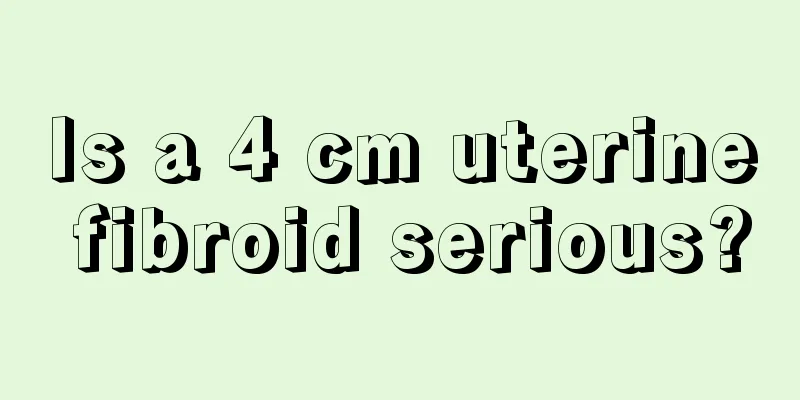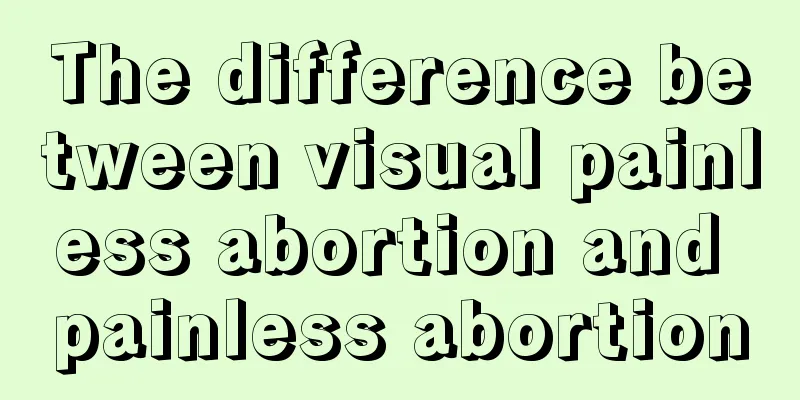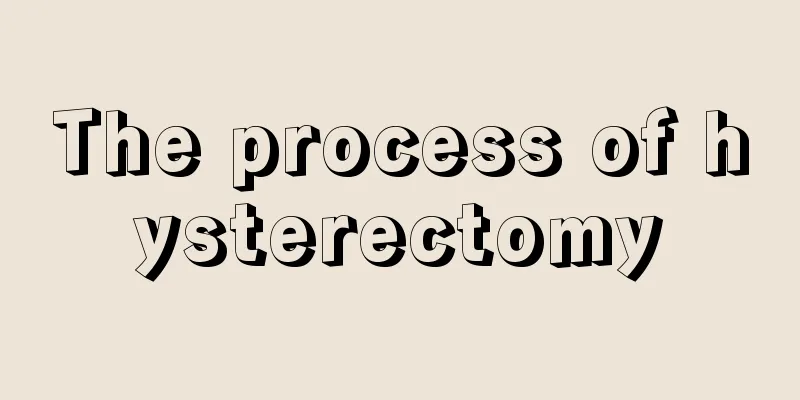Is a 4 cm uterine fibroid serious?

|
Although uterine fibroids are a benign tumor, they have a great impact on women's health. In fact, if uterine fibroids are treated in time, they will not cause any impact on the body. Generally speaking, if the uterine fibroids are four centimeters, although the impact on the body is not particularly large, it must be treated in time. If not treated in time, it will affect women's fertility. Is a 4 cm uterine fibroid serious? Uterine fibroids are 4 cm in size. Although uterine fibroids have not yet affected menstruation, the stimulation caused by the fibroids themselves may lead to miscarriage during pregnancy. If a woman is planning to get pregnant, it is recommended to have surgery to remove the uterine fibroids before getting pregnant, otherwise it is easy to cause miscarriage during pregnancy. After being diagnosed, the doctor will ask the patient to undergo a comprehensive physical examination so that they can develop a detailed treatment plan. Listed below are the commonly used methods for treating uterine tumors, which can be used for your simple understanding. The doctor will explain the specific operation details in detail. 1. Medication Drug treatment is relatively conservative and is mainly suitable for women who still have fertility needs and have mild fibroid symptoms. If the patient is objectively not suitable for or is very averse to surgery, drug treatment can also be used. It is best to do a curettage and endometrial examination before treatment, which can not only stop bleeding but also help obtain first-hand information about the disease. 2. Surgery There are two surgical methods for treating uterine fibroids: hysterectomy and myomectomy. Generally speaking, doctors will recommend myomectomy to women under 45 years old, which can preserve the uterus, because even after menopause, the uterus will continue to function for 5 to 10 years, and women who have their uterus removed too early are prone to aging. When it comes to hysterectomy, doctors usually recommend total removal. Both types of resection surgeries have the possibility of recurrence. Patients should go to the hospital for regular checkups after surgery to prevent the occurrence of new fibroids. 3. Traditional Chinese Medicine Treatment Traditional Chinese medicine treatment focuses on internal conditioning, mainly focusing on promoting blood circulation and removing blood stasis, regulating the liver and spleen, clearing away heat and detoxifying, and starting from regulating the endocrine system to treat uterine tumors. While taking Chinese medicine, patients can also receive acupuncture, massage and other physical therapies to consolidate the treatment effect. Who is prone to uterine fibroids? 1. Women with obese physique According to research data, the more obese a person is, the more likely they are to produce estrogen in their body. For every 10kg weight gain, the incidence of uterine fibroids increases by 12%. So weight problems are closely related to the health of the uterus. 2. Women with high mental stress Traditional Chinese medicine summarizes the causes of tumors in the uterus as "internal injuries caused by the seven emotions" and poor blood circulation. From the literal meaning, it is not difficult to see the importance of emotional factors. Depressed mood will increase the secretion of estrogen. If this mood is not relieved for a long time, it is easy to develop uterine fibroids. 3. Women whose sexual needs are not met The excitement of sexual intercourse between couples can effectively stimulate the nervous and endocrine systems, promote the normal secretion of hormones in the body, and women's mood will also become better. Therefore, female friends who have been single for a long time or whose sexual needs are not met should always be on guard against uterine tumors. 4. Women with a receptor constitution Although some female friends usually pay more attention to maintenance in all aspects, they still get uterine fibroids due to excessive or overly sensitive hormone receptors, which is more difficult to treat. 5. Women with fewer parities There is no specific conclusion on what is considered a high or low number of parities, but what is certain is that uterine tumors are inversely proportional to the number of parities. Women who have never given birth have the highest chance of developing the disease, while old ladies who have given birth to several children rarely suffer from this disease. |
<<: Is a 7 cm uterine fibroid serious?
>>: Can I eat dandelions if I have uterine fibroids?
Recommend
What is the reason for the fishy smell of vaginal discharge?
Normal leucorrhea is a transparent liquid without...
Wearing tight pants will aggravate dysmenorrhea, and the increasing severity of dysmenorrhea is related to them
Menstrual cramps make many people feel "terr...
What foods can make breasts bigger?
The size of the breasts sometimes also represents...
How much does a normal birth cost?
Every mother hopes that her child is healthy and ...
Treatment of white spots on female vulva
Gynecological diseases are very harmful to women&...
Girls' breast development time
Girls' breast development occurs in certain s...
What causes endometrial polyps?
In most cases, endometrial polyps are inflammator...
Will my belly get bigger at 9 weeks of pregnancy?
To determine whether a woman is pregnant, others ...
How to use dandelion to treat breast hyperplasia
The dandelions growing on the roadside are beauti...
What to do about gynecological odor
For some women, they should always pay attention ...
How to improve follicle development
The egg cell is a cell that women can fuse with m...
Why is the menstrual period delayed by 12 days?
If some women have abnormal physical phenomena, t...
Can pregnant women use toothpaste?
In recent years, many people like to have their t...
Is Chinese medicine or Western medicine better for gynecology?
With the improvement of living standards, people&...
Can I eat black glutinous rice when I am pregnant?
It is normal for pregnant women to have very high...









